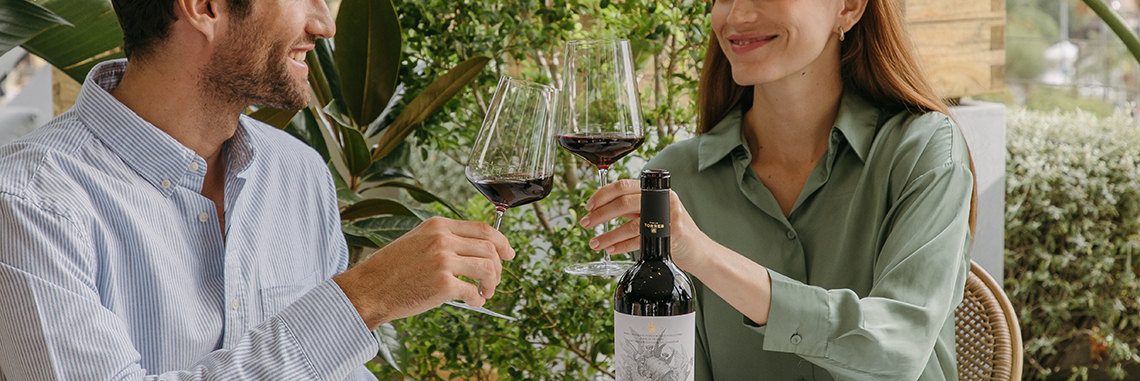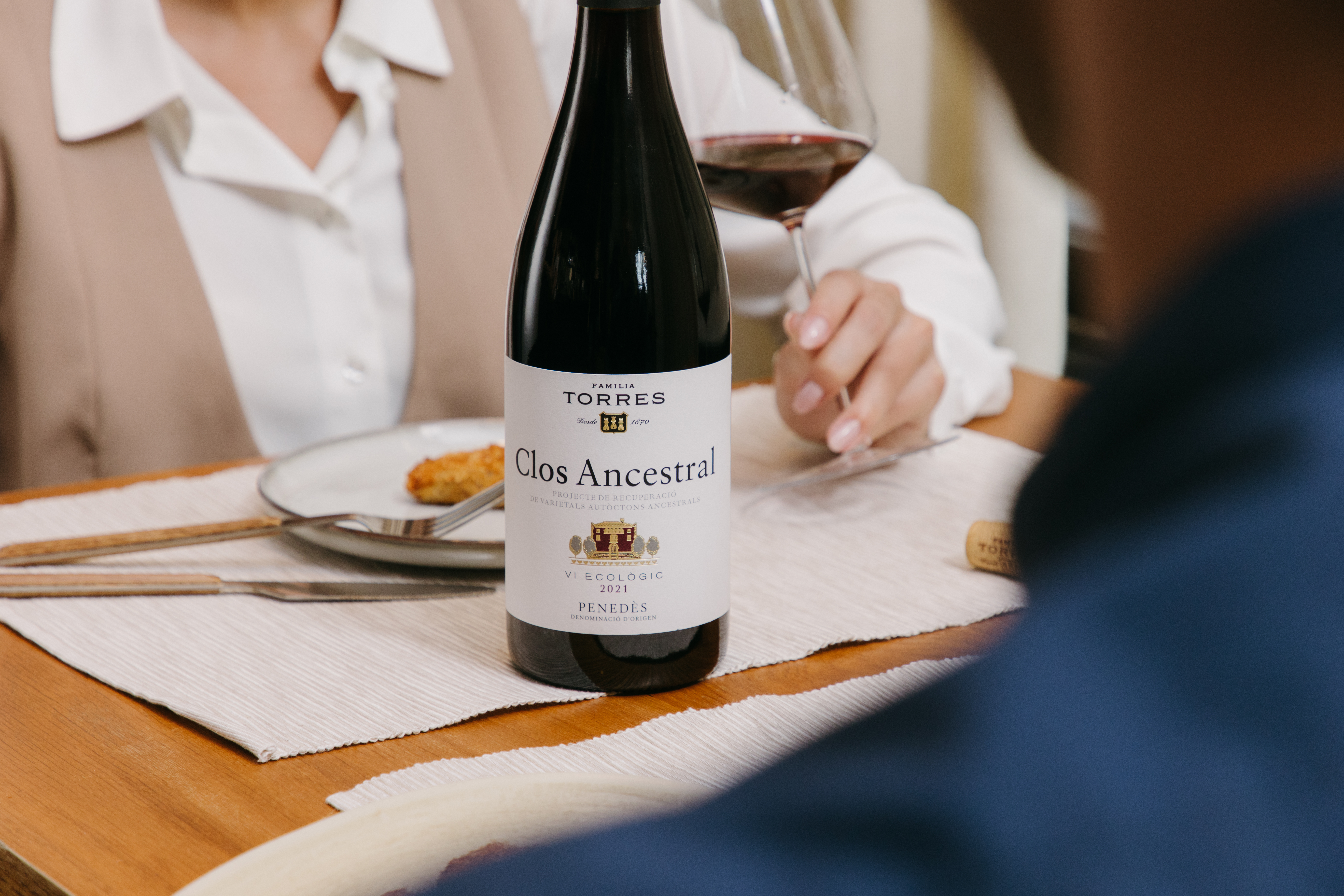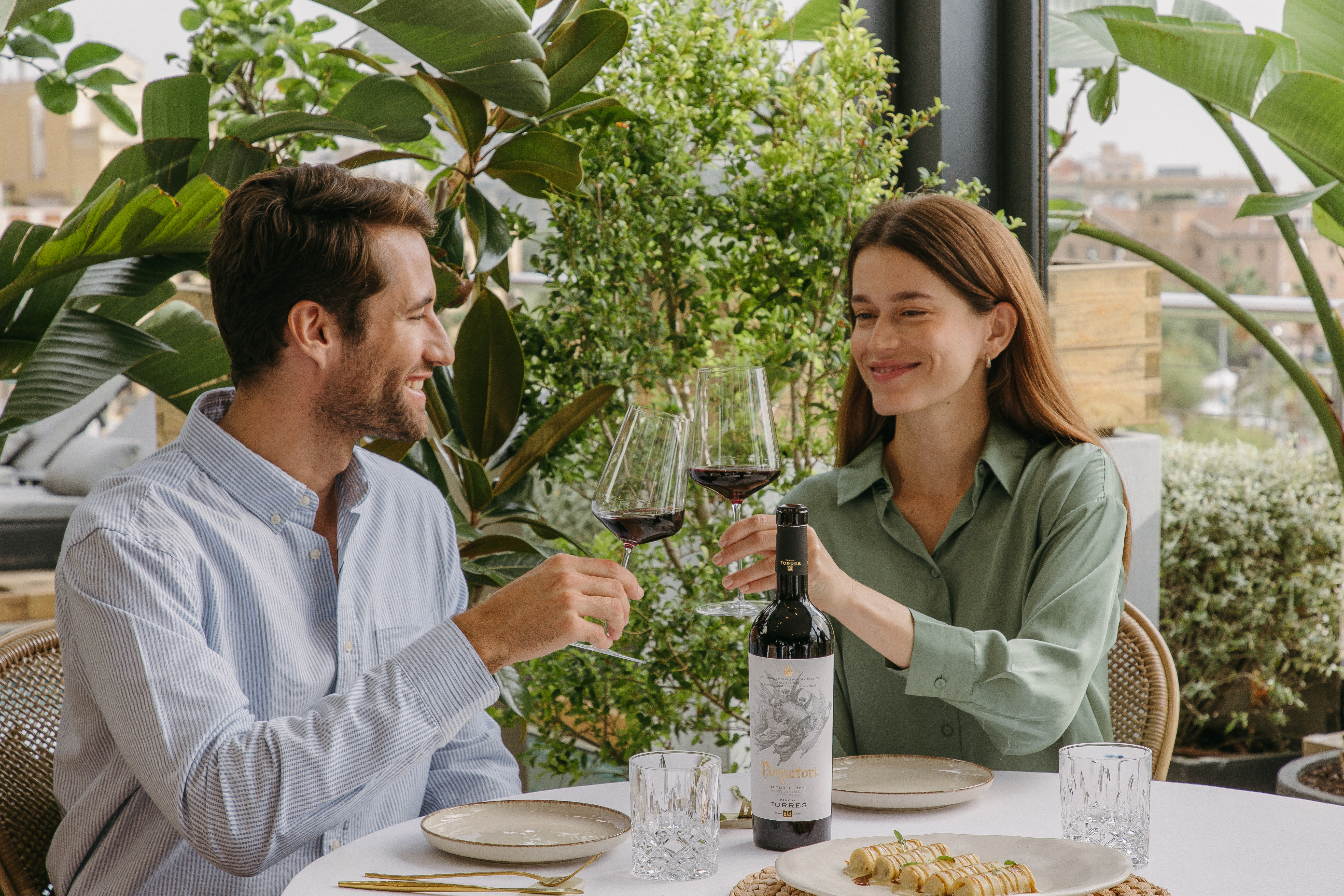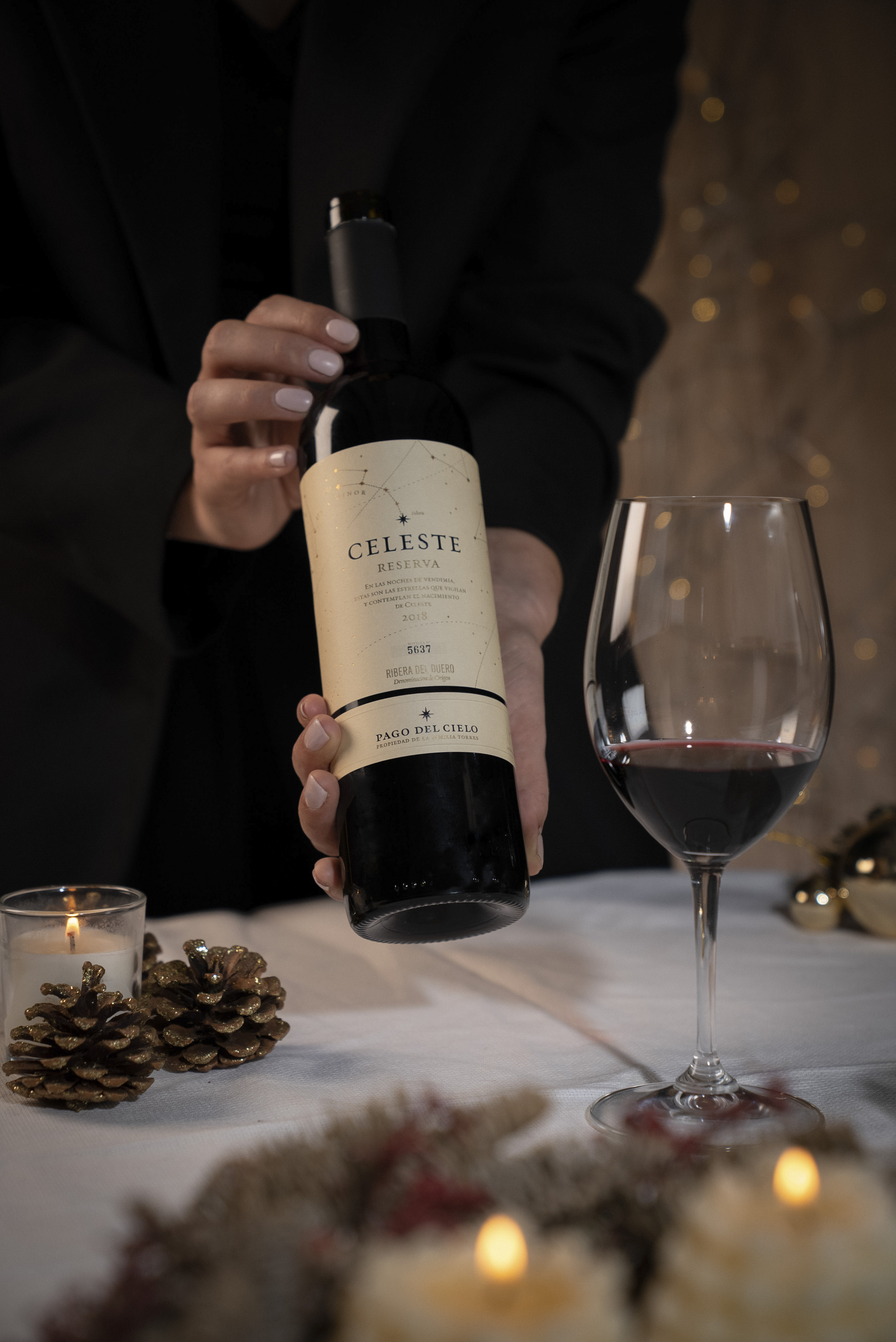TIPS ON CHOOSING WINE AT A RESTAURANT

By Laura Conde, wine writer
Sometimes picking a bottle of wine at a restaurant can be challenging. Most often the decision spontaneously falls to the connoisseur in the group, who usually takes on this responsibility with great delight. That said, the task of choosing the most suitable wine has more to do with personal taste, the number of guests, and the characteristics of the meal than the supposed level of any one person’s expertise.
To make sure the chosen wine pleases everyone present, it is best to turn to the sommelier for advice who, if they do their job well, will know how to read the needs of the table with just a few questions and make the perfect recommendation. If we still want to tackle the task on our own, we can start by answering the following questions:

Clos Ancestral Tinto, a red wine, served at the restaurant Informal in Barcelona
White or red?
This is usually the first question we hear when someone peruses the wine list at a restaurant. Why is it that white and red are almost always the only options under consideration? If our fellow diners are a bit adventurous and willing to experiment, we could always opt for a versatile rosé, for instance, or a subtle sparkling wine that can accompany the entire meal.
If the group is mixed, and we’re not sure of everyone’s preferences, it’s best to play it safe and go with a fresh white with good acidity or a young red. Even if we’re opting for a safe bet, the wine list might still be hard to decode for some guests, in which case we can always apply the golden rule: pick a bottle from a renowned winery. Should we decide to try our luck with a winery we don’t know, asking the sommelier for advice is always a good idea.
When should we pick a wine from the region?
Opting for a wine from the region is usually a good choice for various reasons. If we’re at a restaurant that doesn’t pay particularly close attention to its wine list (unfortunately this is true more often than we’d like), the best wines they serve are probably local, because these always include a few well-known, reliable options. In this case, we shouldn’t risk an international wine, because the restaurant’s selection might be somewhat disappointing. Furthermore, choosing a local wine is a good way of getting to know a region better and discover its essence through winegrowing, so if we’re visiting a place, the answer is clear: a local wine will make for an excellent travel guide.
However, if we are in a restaurant specializing in a particular international cuisine, let’s seek the sommelier’s advice and choose a wine from that country. Not only will it pair well with the food, but the restaurant’s staff will most likely make an excellent recommendation.

Purgatori (DO Costers del Segre) was picked for this meal on the terrace of Informal in Barcelona
Does ordering the cheapest wine really make us look bad?
Of course not! Good wine lists are designed precisely so that they will meet all requirements. If the wine is on the list, someone who is supposed to know what they’re doing decided it belonged there, so there is no shame in ordering it. The same holds true for ordering the second least expensive wine, which tends to be the most common choice.
Should we base our choice on the label?
When it comes to marketing, the wine world has undergone a revolution in recent years so that we might occasionally come across a bottle whose storytelling speaks to us or whose label has our name written on it. That said, it’s best not to rely on intuition in these situations and instead base our decision on objective information (grape variety, appellation of origin, winery, vintage, etc.) Not doing so could result in an epic disappointment like when we click on a Netflix show just because we like the poster. Whereas it is true that classic label designs tend to appeal to a more traditional consumer – partial to long ageing and intense, persistent wines – and contemporary label designs to consumers who prefer light versatile wines, the rule in the wine world (as in any discipline that involves our senses) is precisely that there are no rules.

A waiter showing the label and selected wine to guests
Should we go for a subtle wine or one with personality?
If we’re planning on pairing multiple courses with a single wine, and the guests vary in terms of age, tastes, and sensibilities, it is a good idea to choose a versatile wine with good acidity, subtle and simple. If we’re pairing wine and food, it’s always wise to go from less to more intense: starting with fresher wines to go with appetizers and first courses, and then moving on to a classic, aged wine (either white or red) with meat and fish.
That said, it is worth keeping a rule of thumb in mind: if we’re looking for relatively inexpensive wines, it is always better to pick young wine (or one with a short ageing stint) than a Reserva or Gran Reserva at the same price, because there is always a chance that they might be a rip off. Another tip: it’s better to pick a more expensive wine from a small and lesser-known appellation of origin than a cheaper one from a famous D.O., even if the price range is similar.
What will we eat?
This question gets at the crux of the matter, seeing how the choice of wine clearly depends on the characteristics of the food we will be pairing with it. Wines with good acidity are perfect for dishes with fresh or raw ingredients, from salads and ceviche to marinades and sashimi. By contrast, wines with more bitter notes and tannins go well with roasts, meat, stews, and smoked foods. Aged whites pair well with strongly flavoured fish, either cooked or raw. If we want to take this a step further, we can consider the type of ageing – if the white aged in wood, it will combine well with white meat and, of course, cheese assortments. Rosé wines are magnificent companions for Italian fare, including pasta, parmesan, and desserts like ice cream, whereas a sparkling wine paired with sushi can give the evening an extra bit of “oomph”. If we only want one wine to accompany the entire meal, make sure it pairs well with the main course.
What should we do if we don’t like the wine we ordered?
When the waitstaff invites us to try a wine prior to serving, they do so to make sure it has no faults. That’s all. So, what we shouldn’t do is return the wine if we don’t like it, because if the wine is in perfect condition and has been opened, the restaurant will charge us for it regardless. This is why we should play it safe and choose well-known or classic wines, avoiding those aged in alternative vessels or low-intervention wines which often require a palate that is at least somewhat accustomed to these styles. There is one exception: if the sommelier recommends the wine and lets us try it before we decide, we can always decline and look for another option.
How do we know the wine is at the right temperature?
There is only one answer to this question. The perfect temperature is the one we like best, more so than any standard recommendation. Do we like our reds slightly cooler? Then we should ask for a cooling sleeve without having the feeling that we’re breaking any rules. The same goes for whites: if we like them chilled, we shouldn’t hesitate to ask for an ice bucket.
What about dessert?
Even if we opted for a single wine to go with the entire meal, dessert is always a good moment to switch gears and order a dessert wine. The key to a winning combination is making sure that the sweetness of the wine and the dessert are equally matched. This is a great moment to experiment and yes, in this case, forego classic options, instead asking the sommelier to recommend a good unknown dessert wine. For those not partial to dessert wines, a sparkling wine is also a good match for fresh or fruit desserts.
Finally, the most important tip when it comes to choosing wine, whether in a restaurant or to serve with dinner at home, is to not stress out about it – just like we wouldn’t stress when ordering an omelette or croquettes. There is only one rule to knowing if a wine is perfect, a rule that has proven infallible over time: we should let our palate and nose guide us – and follow what our emotions tell us. Cheers!
